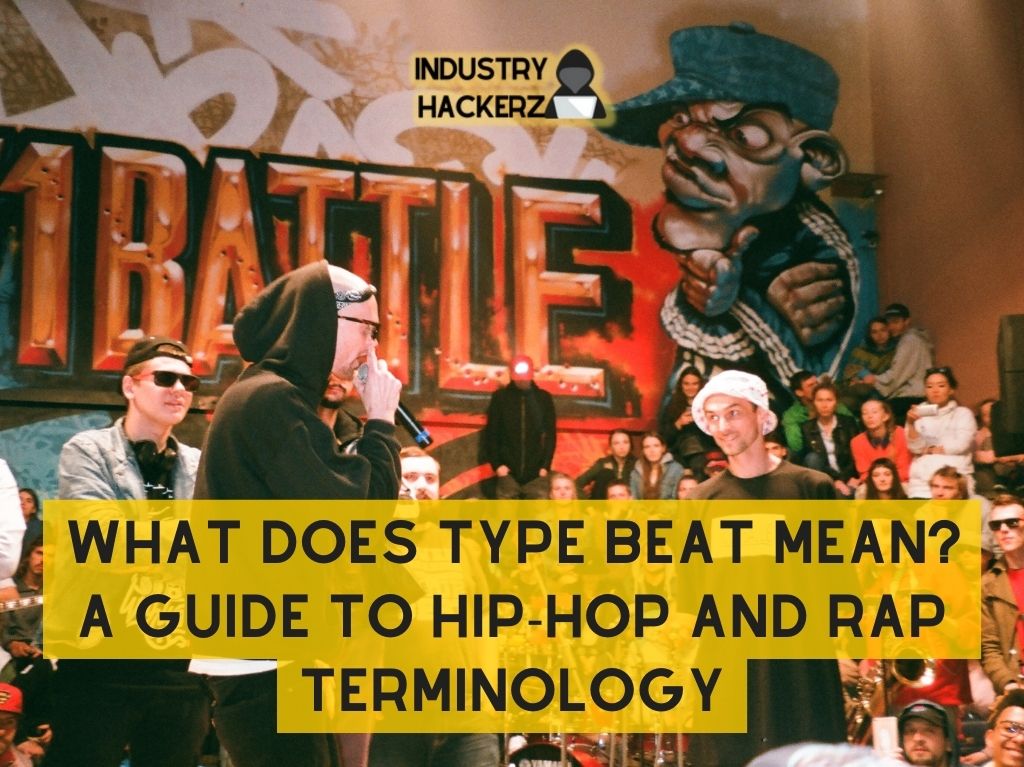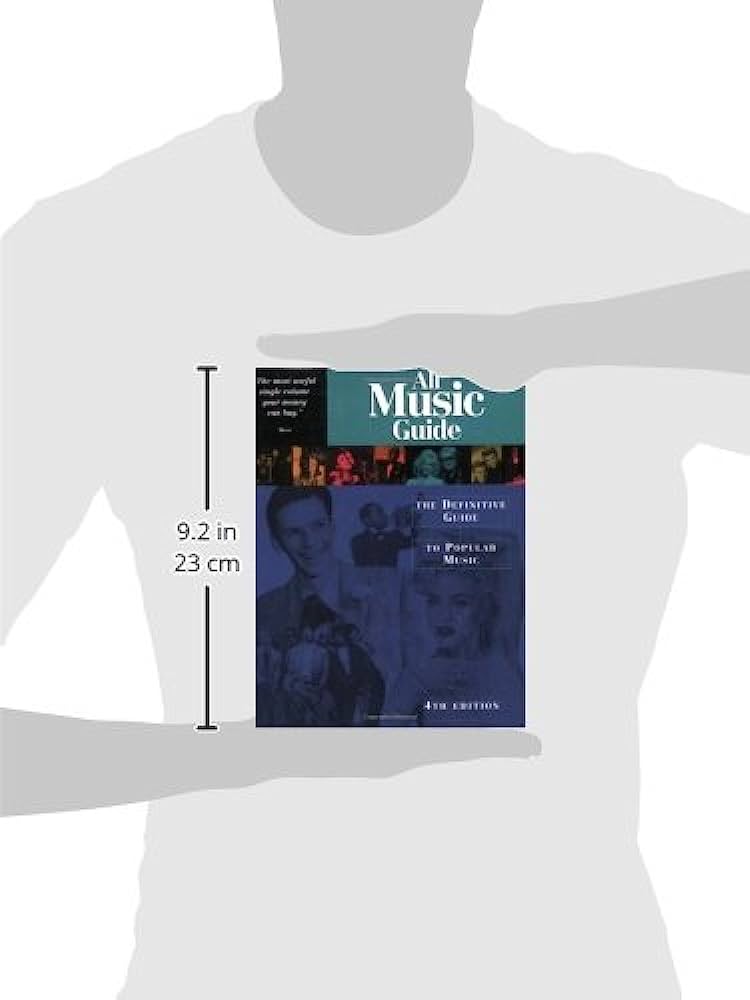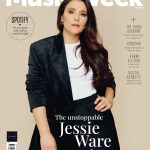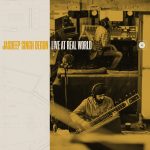Rap music can be classified into several types, each with its own unique style and characteristics.

Credit: industryhackerz.com
Introduction To Rap Music
Rap music has undeniably left an indelible mark on the music industry and has, over the years, evolved into a true art form. From its origins as a cultural movement to its present-day dominance in popular culture, rap has continuously pushed boundaries and given a powerful voice to marginalized communities.
In this section, we will explore the defining elements of rap music and its cultural significance, as well as the evolution of rap music from its early beginnings to the modern rap landscape.
Defining Rap Music And Its Cultural Significance
- Rap music is a genre characterized by rhythmic speech and wordplay over a musical beat. It emerged in the 1970s as a cultural movement in the african american and latino communities in the bronx, new york.
- Rappers use their lyrics to tell stories, express personal experiences, and voice social and political opinions. The genre has become a platform for addressing issues such as inequality, racism, and social injustice.
- Rap music serves as a powerful tool for self-expression and can be seen as a form of artistic protest and social commentary, allowing artists to convey their emotions and perspectives to a wide audience.
- In addition to its musical aspects, rap is also associated with distinct cultural elements such as graffiti art, breakdancing, and djing, which all contribute to its overall significance as a cultural movement.
Evolution Of Rap Music From Its Origins To Modern Times
- Early rap music was often performed at block parties and local venues in the bronx, with djs using turntables and mixers to create catchy beats for mcs (master of ceremonies) to rap over.
- The genre gained mainstream popularity in the 1980s, with artists like run-d.m.c., ll cool j, and public enemy paving the way for rap’s commercial success.
- The 1990s saw the rise of gangsta rap, characterized by its gritty and often controversial lyrics. Artists like n.w.a, tupac shakur, and the notorious b.i.g. Became iconic figures in rap music during this era.
- As rap entered the new millennium, it diversified further, encompassing sub-genres such as conscious rap, alternative hip-hop, and trap music. Artists like kendrick lamar, j. cole, and travis scott have pushed the boundaries of rap music, exploring new sounds and themes.
- Today, rap music continues to dominate the charts and influence popular culture, with artists like drake, cardi b, and travis scott becoming global superstars. The genre has also embraced technological advancements, with the rise of streaming platforms and social media allowing for greater accessibility and exposure for up-and-coming rap artists.
Rap music has come a long way since its early origins, evolving into a dynamic and influential genre that resonates with a diverse range of listeners. Its cultural significance, coupled with its ability to address important social issues, solidifies rap as a vital part of the musical landscape.
Whether it’s through empowering lyrics or innovative production, rap music continues to captivate audiences and leave an enduring impact on both the music industry and society as a whole.
Historical Roots Of Rap Music
The birth of rap music: tracing its origins in hip hop culture
Rap music, a genre that has become an integral part of popular culture, has a rich and fascinating history. It emerged from the streets of new york city in the 1970s and quickly gained recognition worldwide. Let’s dive into the historical roots of rap music and explore how it all began.
- Rapping as a form of expression: Rap music originated as a form of expression within the hip hop culture. It started as a lyrical style of speaking rhythmically over beats, often performed in a freestyle manner. Rappers would engage in impromptu battles to showcase their skills and wit.
- The birth of djing: Djing played a crucial role in the development of rap music. Djs, such as dj kool herc and grandmaster flash, pioneered techniques like “breaks” and “scratching,” creating rhythmic patterns that laid the foundation for rap music. This allowed mcs (master of ceremonies) to deliver their rhymes over the beat.
- Influences on early rap: Examining the impact of funk, soul, and disco music
O funk music: funk music heavily influenced the early days of rap. Its groovy basslines, syncopated rhythms, and energetic beats provided the perfect backdrop for mcs to deliver their lyrics. Acts like james brown and parliament-funkadelic played a significant role in shaping the sound of rap music.
O soul music: soul music, with its emotive vocals and heartfelt lyrics, also left an indelible mark on rap music. Artists like marvin gaye and aretha franklin inspired mcs to infuse their rhymes with personal stories and social commentary, adding depth and soulfulness to the genre.
O disco music: disco music, popular in the 1970s, introduced rap to a wider audience. The infectious beats and danceable tunes of disco tracks became a favorite of early rap djs. They took disco records and extended the instrumental sections, known as “breaks,” for mcs to rhyme over.
This inspired the birth of the breakbeat, an essential element in rap music.
Rap music emerged from the hip hop culture in the 1970s, with djs and mcs creating a unique musical style. Funk, soul, and disco music played crucial roles in shaping the early rap sound, providing the foundation for the genre’s future evolution.
Today, rap music continues to be a powerful and influential force in the world of music and art.
Mainstream Rap Genres
Gangsta rap: exploring the gritty and violent narratives of gangsta rap
Gangsta rap emerged in the late 1980s and early 1990s, originating in the rough neighborhoods of los angeles. This subgenre of rap music delves deep into the harsh realities of street life, highlighting the struggles of inner-city communities. Here are some key points about gangsta rap:
- Authentic storytelling: Gangsta rap artists vividly depict the challenges they have faced, expressing their experiences with brutal honesty and raw emotion. Through their music, they narrate tales of violence, poverty, crime, and the consequences of living in dangerous environments.
- Social commentary: Beyond the violent imagery often associated with gangsta rap, this subgenre also serves as a platform for social and political commentary. It sheds light on systemic issues such as racism, inequality, and police brutality, sparking conversations and challenging the status quo.
- Controversy and criticism: Gangsta rap has faced its fair share of criticism due to its graphic content, explicit language, and glorification of criminal activities. Yet, proponents argue that it provides an authentic portrayal of marginalized communities and serves as a form of creative expression.
Trap Music: Analyzing The Origins And Characteristics Of Trap Music
In the early 2000s, trap music emerged from the southern hip-hop scene, mainly originating from atlanta, georgia. This subgenre is characterized by its energetic beats, heavy basslines, and distinctive lyrical content. Here are some key points about trap music:
- Influential producers: Trap music owes much of its notoriety to influential producers like lex luger and zaytoven, who shaped its distinct sound by incorporating elements of electronic music, synthesizers, and 808 drum machines. These producers introduced a new wave of trap beats that became unmistakable in the genre.
- Lyrical themes: Trap music often revolves around themes of drug dealing, street life, materialism, and the pursuit of success. Artists use their lyrics to reflect the realities and aspirations of urban communities, showcasing both the triumphs and hardships of their experiences.
- Mainstream success: Over the years, trap music has gained significant popularity and crossover success, permeating into mainstream culture. Many artists from diverse backgrounds have embraced the trap sound, further contributing to its widespread recognition.
Conscious Rap: Discussing Socially Conscious And Politically Charged Rap Music
Conscious rap, also known as political rap or social commentary rap, focuses on raising awareness about societal issues and advocating for change. Here are some key points about conscious rap:
- Social advocacy: Conscious rap acts as a platform for artists to express their views on social justice, racism, poverty, political corruption, and other pressing issues. These artists often use their lyrics to provoke thought, inspire action, and stimulate discussions about these critical topics.
- Educational quality: Unlike some other rap genres, conscious rap emphasizes thought-provoking and intellectually stimulating content. It encourages listeners to critically analyze the world around them, promoting social awareness and encouraging active engagement.
- Diversified topics: Conscious rap covers a broad range of topics, including activism, identity, history, and community empowerment. It serves as a channel for marginalized voices and sheds light on the experiences of underrepresented communities, striving for social equity and positive change.
Mainstream rap offers a variety of subgenres that cater to different tastes and preferences. Whether it’s the gritty narratives of gangsta rap, the energetic beats of trap music, or the socially conscious themes of conscious rap, each genre brings its own unique flavor, contributing to the rich and diverse landscape of rap music.
Underground Rap Genres
Alternative Rap: Exploring Experimental And Non-Conforming Styles Within Rap
Alternative rap is a subgenre that pushes the boundaries of traditional rap music, incorporating various elements from different genres and experimenting with non-conforming styles. Here are some key points to understand about alternative rap:
- Fusion of genres: Alternative rap blends elements of rock, jazz, electronic, and other genres, creating a unique sound that appeals to a diverse audience.
- Non-traditional subject matter: Unlike mainstream rap, alternative rap often touches on unconventional topics such as mental health, social inequality, and personal struggles.
- Experimental production: Producers in alternative rap use innovative techniques and unconventional instruments, creating complex and layered beats that defy typical rap music structures.
- Emphasis on lyricism: Alternative rap artists place significant importance on thought-provoking and introspective lyrics, focusing on storytelling and personal expression.
Horrorcore: Analyzing The Horror-Inspired Themes And Imagery In Horrorcore Rap
Horrorcore rap is a subgenre that embraces dark and horror-inspired themes, combining graphic storytelling with intense imagery. Here’s what you should know about horrorcore:
- Graphic storytelling: Horrorcore rap artists often depict violent and graphic narratives, drawing inspiration from horror movies and exploring sinister themes such as murder, supernatural events, and occult practices.
- Distorted production: The production in horrorcore rap is characterized by eerie and menacing sounds, incorporating elements like horror movie samples, haunting melodies, and aggressive beats.
- Shock value: Horrorcore rap aims to shock and provoke a reaction from its listeners, relying on explicit lyrics, disturbing imagery, and grotesque descriptions to create an intense and unsettling experience.
- Cult following: Though often misunderstood and controversial, horrorcore rap has a dedicated fan base that appreciates its distinctive approach to storytelling and appreciation for the macabre.
Mumble Rap: Examining The Controversial Style Known For Its Incomprehensible Lyrics
Mumble rap is a controversial style within rap music that gained popularity in recent years, known for its characteristic mumbled and often incomprehensible lyrics. Consider the following points when discussing mumble rap:
- Unique vocal style: Mumble rap artists employ a laid-back delivery characterized by slurred and mumbled words, prioritizing flow and melody over clear enunciation.
- Catchy melodies and repetitive hooks: Mumble rap often relies on catchy melodies and repetitive hooks to create earworms that resonate with listeners, even if the lyrics themselves are difficult to decipher.
- Criticism and debate: Mumble rap has faced criticism for its perceived lack of lyrical substance and the dilution of traditional rap’s emphasis on storytelling and wordplay. However, proponents argue that it represents a legitimate evolution of the genre, focusing more on the overall vibe and energy.
- Influence on the mainstream: Despite the controversy, mumble rap has made a significant impact on the mainstream music scene, with many mumble rap artists achieving mainstream success and shaping the current landscape of rap music.
Regional And International Styles Of Rap
West Coast Rap:
- West coast rap originated in the 1980s and 1990s in cities such as los angeles and oakland, california.
- This style of rap is known for its laid-back yet aggressive sound, influenced by the sunny and relaxed culture of the west coast.
- Key features of west coast rap include heavy basslines, synthesizers, and catchy hooks.
- Artists like n.w.a, 2pac, and snoop dogg emerged from this scene, putting west coast rap on the global map.
- The lyrics often touch on themes such as gang culture, police brutality, and the struggles of urban life.
East Coast Rap:
- East coast rap, originating from the streets of new york city, emerged in the 1980s and quickly became a major force in the hip-hop industry.
- This style is characterized by its intricate and complex lyrical delivery, focusing on storytelling, wordplay, and social commentary.
- Boom bap beats, with their heavy drums and jazzy samples, are a hallmark of east coast rap.
- Artists like biggie smalls, nas, and jay-z are synonymous with this style, showcasing their lyrical prowess and thoughtful content.
- East coast rap often delves into political issues, reflecting the gritty reality of urban life in the city that never sleeps.
Southern Rap:
- Southern rap, also known as “dirty south” rap, emerged in the 1990s from cities such as atlanta, houston, and new orleans.
- This style of rap incorporates influences from various genres such as gospel, blues, and funk, resulting in a unique sound.
- Southern rap is characterized by its heavy use of bass, catchy hooks, and melodic flow.
- Artists like outkast, lil wayne, and ugk are associated with this style, bringing a fresh and distinctive flavor to the rap scene.
- Southern rap often explores themes of struggle, resilience, and the celebration of southern culture.
Latin Trap:
- Latin trap is a genre that fuses rap with latin music, originating in puerto rico in the early 2010s.
- This style incorporates elements of reggaeton, trap, and hip-hop, creating a lively and energetic sound.
- Latin trap artists such as bad bunny, anuel aa, and ozuna have gained international recognition, blending spanish lyrics with trap beats.
- The lyrics often depict street life, love, and social issues, adding a latin flavor to the rap genre.
- Latin trap has become a global phenomenon, reaching audiences beyond latin america and gaining popularity in the mainstream music scene.
Rap music has given rise to a diverse range of regional and international styles, each with its own unique sound and cultural influences. From the laid-back aggressiveness of west coast rap to the intricate lyricism of east coast rap, the trap influences in southern rap, and the fusion of rap and latin music in latin trap, these styles continue to shape the evolution of the genre.
Sub-Genres And Hybrid Styles
Cloud rap:
Cloud rap is a sub-genre of rap music that has gained popularity in recent years. Its signature sound is characterized by atmospheric and dreamy beats, which create a unique and immersive listening experience. Below are some key points to understand about cloud rap:
- Ambient beats: Cloud rap often features ambient beats that are ethereal and spacey. These beats create a sense of floating and tranquility, setting the mood for the lyrics and vocals.
- Lyrical themes: The lyrics in cloud rap songs often explore introspective and emotional topics. Artists often delve into personal experiences, mental health, and abstract concepts, creating a vulnerable and introspective atmosphere.
- Use of vocal effects: Cloud rap artists often utilize vocal effects such as reverb and auto-tune to further enhance the dreamy and otherworldly feel of their music. This creates a unique sonic experience that is distinctly different from traditional rap.
Grime:
Grime music originated in the uk and is known for its energetic and raw style. It emerged in the early 2000s and has since become a significant sub-genre within the rap music scene. Here are some key points to understand about grime:
- Fast-paced delivery: Grime is characterized by rapid-fire lyrics delivered with a distinct flow. Artists showcase their technical skills through intricate wordplay, punchlines, and impressive rhyme schemes. The energetic pace of grime sets it apart from other rap sub-genres.
- Urban storytelling: Grime lyrics often reflect the gritty realities of urban life. Artists share their personal experiences, shed light on social issues, and paint vivid pictures of their surroundings. This storytelling aspect adds depth and authenticity to grime music.
- Heavy bass and electronic influences: Grime beats are typically driven by heavy basslines, punchy drums, and electronic elements. This fusion of traditional rap and electronic music creates a unique and vibrant sound that resonates with listeners.
Jazz rap:
Jazz rap is a sub-genre that combines the improvisation and musicality of jazz with the lyrical prowess of rap. It fuses the melodic elements of jazz with the rhythmic flow and wordplay of rap. Here are some key points about jazz rap:
- Fusion of genres: Jazz rap seamlessly blends jazz instrumentation and samples with rap vocals. This combination creates a dynamic musical landscape that allows for both instrumental improvisation and lyrical expression.
- Complex musical arrangements: Jazz rap often features intricate musical arrangements, with musicians incorporating improvisation and jazz-inspired chord progressions. This adds a level of sophistication and complexity to the genre.
- Lyrical depth and poetic storytelling: Jazz rap lyrics are often introspective and poetic, tackling a wide range of topics such as social issues, personal struggles, and philosophical concepts. The emphasis on lyrical depth sets jazz rap apart from other rap sub-genres.
Experimental rap:
Experimental rap pushes the boundaries of traditional rap music, embracing avant-garde styles and unconventional approaches. It challenges the norms and conventions of the genre, resulting in unique and unconventional sounds. Here are some key points about experimental rap:
- Unorthodox production techniques: Experimental rap often incorporates unconventional production techniques, such as the use of non-traditional instruments, electronic manipulation, and experimental sound design. This creates innovative and unexpected sonic textures.
- Abstract and thought-provoking lyrics: Experimental rap lyrics can be abstract, nonlinear, and deeply introspective. Artists may express their ideas in unconventional ways, challenging listeners to interpret and engage with the music on a deeper level.
- Genre-bending collaborations: Experimental rap frequently involves collaborations with artists from various other genres, including electronic, rock, and classical music. These collaborations result in boundary-pushing and genre-blurring tracks that defy categorization.
Rap music is a diverse and evolving genre with numerous sub-genres and hybrid styles. From the atmospheric and dreamy sound of cloud rap to the energetic and raw style of grime music, each sub-genre brings its own unique flavor to the rap music landscape.
Jazz rap combines the improvisation of jazz with the lyrical prowess of rap, while experimental rap pushes the boundaries and explores new sonic territories. These sub-genres represent the constant innovation and creativity within rap music, offering something for every listener.
Impact Of Rap Music On Society
Rap music, with its dynamic beats, powerful lyrics, and distinctive style, has had a significant impact on society. From addressing social issues and inequalities to influencing fashion, language, and popular culture, rap music has become a force to be reckoned with.
However, it hasn’t been without controversy and criticism. In this section, we will explore the multifaceted impact of rap music on society.
Social Commentary: Examining How Rap Music Addresses Social Issues And Inequalities
- Rap music acts as a potent platform for artists to voice their concerns about social issues and inequalities. Through thoughtful lyrics and storytelling, it shines a light on the challenges faced by marginalized communities.
- Rap music provides an unfiltered perspective on topics such as racism, poverty, police brutality, and gender inequality. It serves as a catalyst for important conversations and raises awareness about these pressing issues.
- The genre has often been a form of protest, capturing the frustrations and anger of individuals who feel unheard or oppressed. It fosters a sense of empowerment among listeners, encouraging them to take action and advocate for change.
- Notable rap artists like tupac shakur, kendrick lamar, and j. cole have used their platforms to address societal problems and provoke introspection. Their impact extends beyond the music industry, inspiring social movements and encouraging activism.
Cultural Influence: Analyzing The Impact Of Rap Music On Fashion, Language, And Popular Culture
- Rap music has spearheaded fashion trends, influencing streetwear, accessories, and even high-end fashion. Artists like run-d.m.c., kanye west, and a$ap rocky have set trends that have permeated both the music and fashion industries.
- The language used in rap music has seeped into mainstream culture, with slang terms, inventive wordplay, and lyrical storytelling becoming recognized and adopted by wider audiences. The influence can be seen in movies, television shows, and everyday conversation.
- Rap music has also played a pivotal role in shaping popular culture. It has influenced the entertainment industry, dance trends, and the way artists express themselves creatively. The impact can be seen across various mediums, from film soundtracks to collaborations between musicians and other artists.
Controversies And Criticisms: Discussing The Criticism And Controversies Surrounding Rap Music
- Rap music has faced criticism for its explicit and often violent lyrics. Detractors argue that it promotes negative stereotypes and glorifies a culture of violence and materialism.
- Some critics claim that rap music perpetuates misogyny and sexism, objectifying women and promoting harmful attitudes. Others argue that the genre is not representative of all voices within the community and can overshadow positive messages.
- Rap music has also been blamed for the rise of gang culture, with detractors linking it to criminal activities and violence. However, proponents argue that rap music provides an outlet for artists to express their reality and that it shouldn’t be misconstrued as a reflection of their entire community.
- Despite the criticisms, rap music has continued to evolve and push boundaries, sparking important discussions and challenging societal norms.
Rap music’s impact on society cannot be understated. From tackling social issues and influencing culture to facing controversies and criticism, the genre continues to shape the world we live in today. As the influence of rap music grows, it remains a powerful tool for social commentary and self-expression.
The Future Of Rap Music
Emerging Trends:
Rap music is a constantly evolving genre, and as we look to the future, there are several emerging trends that are shaping the landscape. Here are some key points to keep an eye on:
- Blending of genres: Rap artists are increasingly incorporating elements from other genres such as r&b, rock, and pop into their music. This fusion not only diversifies the sound but also attracts a wider audience.
- International influence: Rap music is no longer limited to the united states. Artists from different countries and cultures are making their mark on the genre, bringing their unique styles and perspectives.
- Embracing diversity: The future of rap music is becoming more inclusive by embracing artists from various backgrounds. This shift allows for a more diverse range of voices and experiences to be represented in the genre.
Innovation And Experimentation:
Rap artists have always pushed boundaries and challenged the norms, and they continue to do so in order to redefine the genre. Here are some points to consider when discussing innovation and experimentation in rap:
- Vocal experimentation: Artists are constantly finding new ways to manipulate their voices, exploring different flows, tones, and delivery styles to create unique sounds that stand out from the crowd.
- Lyrical complexity: Rappers are pushing the limits of their wordplay and storytelling abilities, incorporating intricate metaphors, double entendres, and clever wordplay to captivate listeners.
- Production breakthroughs: The beats and production in rap music are evolving as artists experiment with unconventional sounds, samples, and production techniques. This experimentation adds depth and complexity to the overall sonic experience.
The future of rap music is undoubtedly bright, with emerging trends and a constant drive for innovation and experimentation. As the genre continues to evolve, we can expect new sounds, diverse voices, and groundbreaking artistry that will shape the future of rap music for years to come.
Keep your ears open and get ready to witness the next wave of rap music’s evolution.
Frequently Asked Questions On Types Of Rap Music
What Are The Different Types Of Rap Music?
Different types of rap music include gangsta rap, conscious rap, trap music, mumble rap, and old school rap. Each type has its own unique style, lyrical content, and cultural influence.
Is Trap Music A Subgenre Of Rap?
Yes, trap music is a subgenre of rap that originated in the southern united states. It is characterized by its heavy use of synthesized beats, 808 bass, and lyrics that often revolve around themes of street life, drugs, and money.
Who Are Some Famous Old School Rap Artists?
Some famous old school rap artists include grandmaster flash and the furious five, run-dmc, ll cool j, n. w. a, and public enemy. These artists were pioneers in the genre and laid the foundations for modern rap music.
Conclusion
Overall, rap music is a diverse genre that encompasses a wide range of styles and subject matters. From the old school boom bap beats of the east coast to the trap-infused sound of the south, there is something for everyone within the rap music world.
Whether you prefer the lyrical prowess of conscious rap or the catchy hooks of mainstream rap, there is no denying the impact and influence that rap music has had on popular culture. With its ability to convey powerful messages, tell stories, and connect with listeners on a deep level, rap music continues to evolve and push boundaries.
It is an art form that allows artists to express themselves and share their experiences with the world. So whether you’re a long-time fan or new to the genre, take the time to explore the different types of rap music and discover the unique sounds and narratives that each subgenre has to offer.













